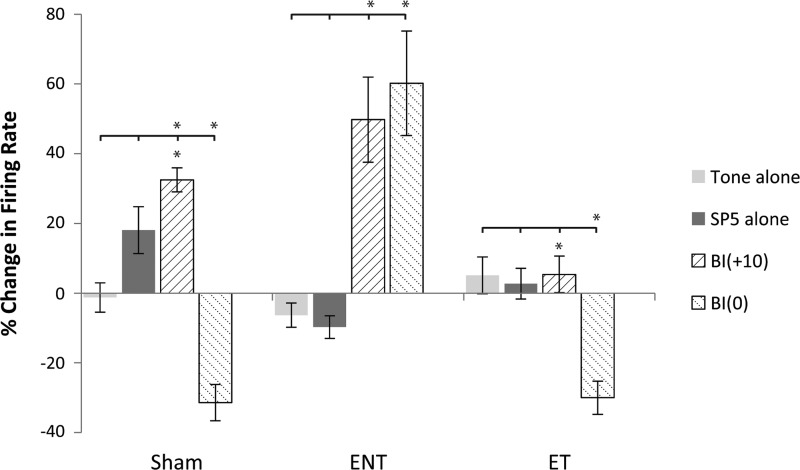Fig. 6.
Bimodal stimulation induces more plasticity than unimodal stimulation A1. Bar graph shows the effects of tone (light gray) and Sp5 (dark gray) alone on the percent change in neural firing rates in all three (sham-control, ENT, and ET) groups in A1. The graph also shows the direct comparison of the unimodal responses to the bimodal responses where maximal enhancement (+10 ms; upward hatch) and suppression (0 ms; downward hatch) were observed. With the exception of a modest increase in neural firing rate in sham-controls following Sp5 alone, neither unimodal stimulus significantly altered neural firing rates alone. Bimodal stimulation results in greater levels of enhancement and suppression of neural firing depending on BI [overlying bar denotes individual comparison between unimodal and bimodal stimulus (tabs) that is statistically significant compared with the bimodal stimulus, *P < 0.05; Tukey-Kramer's post hoc test; asterisk under bar denotes comparison to other bimodal stimulus; *P < 0.05; Tukey-Kramer's post hoc test]. A1, primary auditory cortex; BF, best frequency; PSTH, peri-stimulus time histogram; Sp5, spinal trigeminal nucleus; STDP, spike timing-dependent plasticity.

